Today's was a familiar walk I've done before, from North Ferriby to St Andrew's Quay, but the conditions made it into a wonderful day, very different from my previous experience. I took the train to North Ferriby and walked straight to the Humber shore, then following the coastal footpath (shared by the Trans-Pennine Way and Wolds Way) east. The first stretch is on the foreshore itself. The tide had been high a couple of hours prior and much of the shore and mudbanks were exposed. Wigeon and Redshank were dotted all along the walk feeding near the waterline. The top of the foreshore was easy to walk on and I could explore the little patches of saltmarsh without disturbing the birds. It was mild and still, the Humber a mirror reflecting the bridge, quite a dramatic change with yesterdays stormy weather. Overhead, Pink-footed Geese calling as they crossed the Humber towards Lincolnshire.
Goldfinch on Alders on the way to the train station.
I climb the sea wall and look at the reedy pond. Just a Moorhen is visible, but a Water Rail calls, and a runner flushes a Green Woodpecker from the path. The paddocks are covered in birds: Goldfinches, Greenfinches, Chaffinches, Starling and Pied Wagtails. There are two Meadow Pipits, one of them stopping to scratch constantly. I continue on the top footpath and at some point walk down to the beach again to explore the saltmarsh.
A Woodpigeon with a serious case of avian pox. If the bird can feed, recovery is possible as the lesions can regress after a few weeks.
Looking back to North Ferriby. The foreshore is mostly chalk pebbles.
Another favourite sighting of the day. This Great Black-backed gull had found some food, maybe a flat fish? and was mostly happy to share with the Carrion Crows.
It was a long walk, a total of 23 km, after St Andrews Quay I pressed home, passing by the Rawlings Way rowans where I had Waxwings a few years ago. Plenty of berries but just Blackbirds enjoying them.



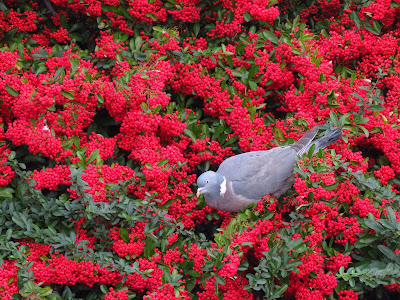
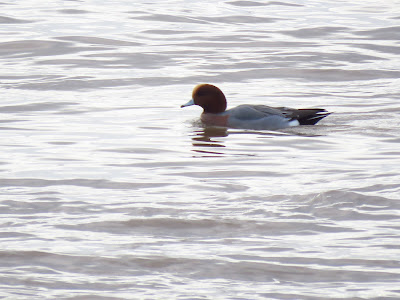


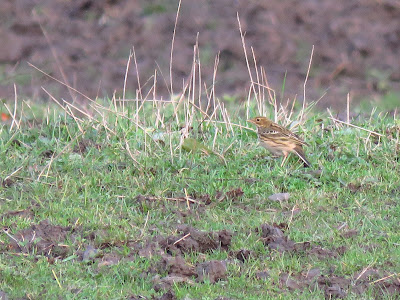
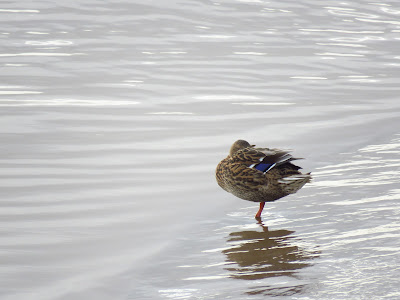



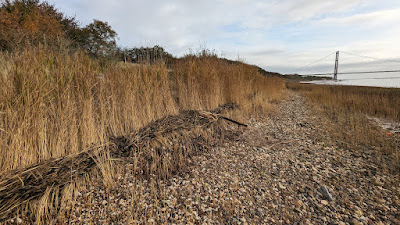














No comments:
Post a Comment